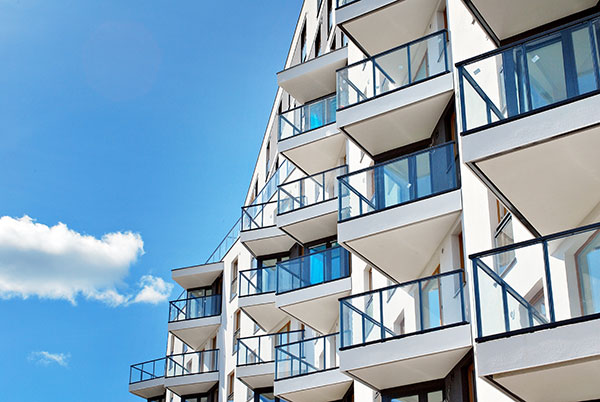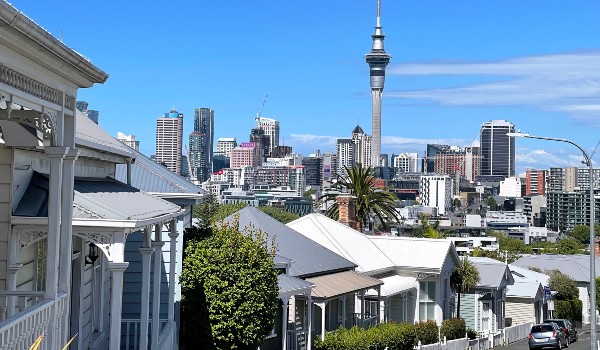
- WFH households spent 7% more on housing for larger homes with more space to work.
- Businesses could benefit from cheaper rents in the CBD as demand decreases.
- Employees who didn’t WFH prior to the pandemic are less likely to get enough physical activity.
- Lack of ‘incidental movement’ during commuting and walking around an office contributes to 21 minutes less physical activity per day.
Working from home, otherwise known as WFH, was initially a novelty of lockdowns.
But now that flexible working has become a more permanent way of life for many, long-term changes to society have been documented in a new research paper commissioned by the Australian Government.
Combining research from Australia, the U.S. and the United Kingdom, the report reveals how the habits of Western societies are slowly changing, from the type of properties we buy to the amount of physical exercise we get.
REDnews has pulled together some of the highlights from the report:
Housing: WFH means bigger houses with more spent on them
To create a comfortable working from home environment, space is required to set up a desk, computer equipment, meeting spaces and the capacity to store physical goods.
“This means current houses and apartments may be insufficient to facilitate effective work from home,” the report said.
U.S. survey data from 2021 found that prior to the pandemic, remote working households spent 7% more on housing than households that didn’t undertake WFH.
“This higher expenditure was largely driven by owning larger houses and a higher price per room. This desire for larger houses would also correspond to a movement away from the centre of cities to suburbs.”

Small apartments in CBDs may be less desirable as WFH becomes more popular
High and middle-income earners who work remotely also had an increased desire to move out of high- density city suburbs to areas with more space, according to research from the U.S. and Australia.
“If this change in preferences endures, then the shift in demand is also likely to continue past the pandemic,” the report said.
Ray White real estate salesperson Ryan Teece told REDnews that the more time New Zealanders have spent at home during lockdown, the more they’ve really thought about how they want to live.
“For some people that means moving away from the CBD and further into the suburbs where they can have more space, but for others, apartments have become an attractive option if they also have a bach in another part of the country,” Teece said.
“Buyers, particularly those with families, have upped their wish lists, which now often includes an office. A study nook will no longer suffice, particularly if you have two adults and a teenager working from home.
“Basically, homes need to become more flexible as we move in and out of lockdowns and increase remote working, that doesn’t necessarily mean more floor space, but smarter layouts that can be changed when needed,” he said.
WFH means changes to CBDs
The shift away from centralised workplaces not only affects the types of housing in demand, but it means fewer people in the CBDs – where those people used to spend their money before work, at lunchtime and after work.
This could mean businesses end up spreading across cities more evenly, rather than all being located in one centralised area.

As less people dominate the CBDs, services could spread out to suburbs
“But just as people and businesses are adapting to the possibilities of widespread WFH, they will also adapt to the changes it brings. For example, any decrease in the cost of renting office space in cities – combined with the difficulty of repurposing office space in the short term – may enable some firms to take advantage of cheaper or better office space. And the convenience of operating a business with many others located close by, as well as the lifestyle of living closer to the bustling city, are both things that many people are likely to continue to value even when WFH becomes an option.”
Westpac NZ Senior Economist Satish Ranchhod says the pandemic has accelerated some of the trends his team had already been seeing before the outbreak.
“Recently we have seen some employers encouraging staff to come into the office more often, highlighting the importance of social connections and the boost to productivity in some roles.
“However, I don’t expect that will completely reverse all of the changes we’ve seen. Prior to lockdowns, many businesses were already looking at reducing their footprints (while often moving into higher-spec premises), and I suspect that will continue.
“The number of people coming into traditional central business districts may be lower than in the past. That could be reflected in the demand for office and retail space, and in the related rents.
“There’s likely to be a greater impact on the demand for lower quality retail and office space, with many tenants likely to gravitate towards newer, higher quality spaces,” Ranchhod said.
Westpac’s Auckland corporate office was seeing an average occupancy rate of 70% in May 2021 after increasing flexible working arrangements with employees.
WFH Wellbeing plusses and minuses
There are both positive and negative effects on our wellbeing from WFH.
The downsides can include loneliness, negative mental and physical health effects and the blurring of boundaries between work and home, according to the report.
Although working remotely can provide more flexibility in a person’s schedule, research has shown that physical activity can dramatically decrease because of the lack of incidental movement, like walking up and down the office stairs or to the train station.
“WFH has the potential to influence people in different ways. WFH can improve physical and mental health as it gives people more time to exercise, sleep, cook nutritious food, or engage in other health enhancing activities. But it can also worsen physical and mental health.”
“Research from the United Kingdom suggests that the average public transport commuter misses out on 21 minutes of incidental exercise each day that they work from home. A reduction in physical activity can lead to an increase in a range of diseases including obesity, heart disease, diabetes and osteoporosis.
“Employees who worked from home before the pandemic were less likely to engage in high levels of physical activity than those working from a centralised workplace, particularly those who were aged 45 years and older.”
Despite WFH cutting out a daily commute to an office, it can make it hard for some employees to ‘switch off’ by not having any physical separation between work and home.
“Survey evidence suggests that working from home is associated with improved satisfaction with work-life balance. However, employee’s perceptions are diverse. While for many people, WFH improves their work-life balance, others find that maintaining a work-life balance is the most significant difficulty they experience when WFH.”
When it comes to unpaid work around the home, Australian data shows working men are likely to be rated as doing less than their fair share of household and childcare tasks, regardless of whether they work from home.
Related articles:
Inside the agriculture sector that's been business as usual during lockdowns
